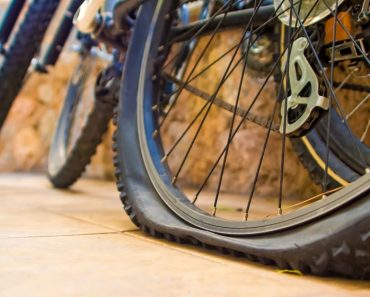The winds howl and the skies darken as Hurricane Beryl makes landfall, a storm of unprecedented force poised to wreak havoc on the coast of Texas and further inland. This formidable force of nature, which has already left a trail of destruction in its wake, demands our immediate attention and action, showing us this hurricane season will be more dangerous than ever, Beryl being the earliest forming Category 5 hurricane in known history. We have a long summer and autumn ahead of us if it’s going to be this bad this early.
The Ghosts of Katrina: A Painful Reminder
If there’s one thing we learned from Hurricane Katrina, it’s that the time to prepare is before the storm hits. The memories of Hurricane Katrina still haunt us, a painful reminder of nature’s devastating power and our vulnerability in the face of it. Katrina’s catastrophic impact in 2005 will continue to serve as a harrowing lesson. The death toll reached nearly 1,400, and the damage soared to an astronomical $125 billion. The slow and inadequate response of the government compounded the misery, exposing severe deficiencies in disaster preparedness.
Katrina’s aftermath was a nightmare — families torn apart, homes destroyed, and a community left to rebuild from the ruins. The scars are still fresh for many, even now, close to 20 years later, and the prospect of facing another powerful storm should evoke a deep sense of dread, even more so as Katrina was an August Hurricane, whereas Beryl is a Category 5 as early as June.
The tragic images of New Orleans submerged under water, people stranded on rooftops, and the chaotic evacuation efforts still linger in our collective memory. Katrina’s impact was a powerful image of the devastation nature can wreak and the critical importance of preparedness. It taught all of us a harsh lesson — underestimating the potential of a storm could lead to devastating consequences.
Prepare and Protect
Now with Beryl already reaching to the Texas coast, the call to action is clear. Authorities have issued hurricane and storm surge watches, urging residents to evacuate and prepare. The forecast warns of devastating storm surges, potentially fatal flooding, and winds strong enough to cause significant damage.
The Importance of Reliable Food Supplies
Food security is a cornerstone of any emergency preparedness plan. During severe storms, you will find supply chains disrupted and access to fresh food limited. Canned goods emerge as an optimal choice in these scenarios, given that Beryl cut power to millions as soon as it made landfall in the US.
Canned meat offers a high-protein, long-lasting food source that requires no refrigeration. This makes it ideal for situations where power outages can render fresh and frozen food unusable. The convenience of canned meat means that, even in the midst of chaos, you have a reliable source of sustenance. It’s also versatile, allowing you to create a variety of meals with minimal preparation. Stocking up on different types of canned meats, such as chicken, beef, tuna, and spam, ensures that you can maintain a balanced diet and avoid the monotony of repetitive meals.
To ensure the longevity of your canned goods, it’s essential to store them in a cool, dry place, steering clear of areas prone to temperature fluctuations, which can adversely affect the food’s quality. Also key is making sure that your canned goods are still good to eat and having a can opener that’s not dependent on electricity.
For meal ideas, the versatility of canned goods shines through. Creating a quick and nutritious stew by combining canned meat with an assortment of canned vegetables and broth is easy to do even in a lights out scenario, on a camping stove inside a safe place, though you should be mindful of the risk of fire. For a simple yet delicious chicken salad, mix canned chicken with mayonnaise (which you want to do first as it doesn’t hold very well once opened) and your preferred seasonings. If you’re in need of something hearty and nutritious, use canned beef to craft flavorful tacos or even a chili con carne, paired with pre-packaged tortillas and salsa.
You can always go for protein bars and other options for quick and strong energy in the first few hours of SHTF, but the versatility of canned goods can’t be ignored when you’re waiting for the power to come back on and you just want a warm meal.
The Lifeline of Water
Water is arguably the most crucial resource during any emergency. The human body can only survive a few days without it, and during a storm like Beryl, access to clean, potable water can quickly become compromised.
Ensuring you have an adequate supply of water involves more than just filling a few bottles. For a short-term emergency, the recommendation you need to follow is to store at least one gallon of water per person per day for a minimum of three days. For more extended periods, aiming for a two-week supply is prudent. Additionally, having methods to purify water, such as purification tablets, portable filters, or even small distillation units, is essential. These methods can help you turn potentially contaminated water sources into safe drinking water, thus extending your survival capabilities. If you’re not creating a fire hazard, which may be the case if you’re in the wake of destruction, making a fire and just boiling the water will go a long way, even if you need to wait for it to cool in order to drink.
To ensure the safety and longevity of your stored water, it’s crucial to use food-grade containers, steering clear of any that previously contained chemicals. If you’re storing these long-term, the containers should be stored in a cool, dark place to inhibit the growth of algae and bacteria. For effective management, label each container with the date it was filled, and make it a habit to rotate your supply every six months to maintain freshness and safety.
When it comes to purification methods, water purification tablets are an excellent choice for emergency kits due to their compact size and ease of use. In a prolonged SHTF scenario, you may need to drink from natural sources and that’s where portable water filters are invaluable, as you can effectively remove bacteria and protozoa with them.
The Necessity of Medical Supplies
In the wake of a severe storm, medical facilities may be overwhelmed or unreachable to you. Having a well-stocked supply of medical essentials will prove to be a lifesaver if you’re injured during the hurricane or even after, when you’re trying to pick up the pieces.
A comprehensive first aid kit is your first line of defense. This should include bandages, antiseptics, gauze, medical tape, scissors, and tweezers, along with a variety of over-the-counter medications such as pain relievers, antihistamines, and antidiarrheals. If you or a family member rely on prescription medications, ensure you have an adequate supply to last through the emergency, which you should do anyway, for any type of disaster. Furthermore, considering any special medical needs is crucial – this might include insulin for diabetics, inhalers for asthmatics, or epi-pens for severe allergies. Being prepared on the medical front ensures that you can treat minor injuries and make sure health issues don’t escalate into serious problems due to lack of immediate care.
To protect your medical supplies from moisture and potential flooding, which the hurricane may bring, store them in a waterproof container. It’s also essential to keep medications in their original containers with labels intact to prevent any confusion and ensure correct dosages, and if you need to transfer them, make sure to label them correctly. Regularly checking the expiration dates of your medical supplies and replacing items as needed is crucial to maintaining an effective emergency kit.
For family members with specific medical needs, it’s wise to create a personalized emergency kit that includes all their necessary supplies. Additionally, consider taking a basic first aid and CPR course to enhance your ability to handle medical emergencies during a crisis. This is knowledge prepping and may mean life or death for you and your loved ones in an emergency so make sure you know beforehand what to do as the Internet’s surely going to be out.
Staying Connected and Safe
Power outages are a common and often long-lasting consequence of severe storms. Having alternative power sources can be a lifesaver and key in maintaining safety.
Portable generators are invaluable, providing the ability to power essential appliances and maintain electricity for lights, refrigerators, and medical devices. Ensuring you have a safe and sufficient fuel supply for your generator is equally important as is storage for it; always store it in such a way that it can’t get to your food and ruin it, you don’t want to eat “benzene beans”. Solar chargers also offer a sustainable option for keeping small electronics like phones, radios, and flashlights operational, mostly in the aftermath of the storm.
When choosing a generator, ensure it has sufficient wattage to power all your essential devices. Store fuel in sturdy containers, keeping it in a well-ventilated area away from living spaces to avoid any safety hazards. Regular maintenance of your generator is also crucial to ensure it operates smoothly when needed.
For solar chargers, invest in a high-quality model with a robust battery bank to store energy efficiently, because if push comes to shove, it may be the only way to get electricity to power a NOAA radio and find out the situation.
When it comes to batteries, stock up on a variety of sizes, including AA, AAA, and D, to power different devices. Don’t put all your money in this, however, as it’s easier to check what batteries you’ll need and go off of that. You also want to be mindful of their storage as over time, batteries can leak harmful chemicals and you don’t want those near your water or food.
Conclusion
Preparing for this year’s hurricanes, of which Beryl is, unfortunately, only the first involves more than just a checklist; it requires you take a strategic approach to ensure your family and your safety. Canned goods provide a dependable food source, water is vital for survival, medical supplies address health concerns, and alternative power sources keep you connected and safe. By focusing on these essentials, you can face Beryl and the storms to come with confidence, knowing that you have taken the necessary steps to protect yourself and your loved ones. In the world of prepping, being over-prepared is always better than being under-prepared. Stay vigilant, stay ready, and ensure your preparedness plan covers these critical areas.



![Has the World Gone Mad? Racism in Media [PODCAST] Has the World Gone Mad? Racism in Media [PODCAST]](https://survivalcove.com/wp-content/uploads/2021/11/survival-preppers-podcast-banner-370x297.jpg)
























